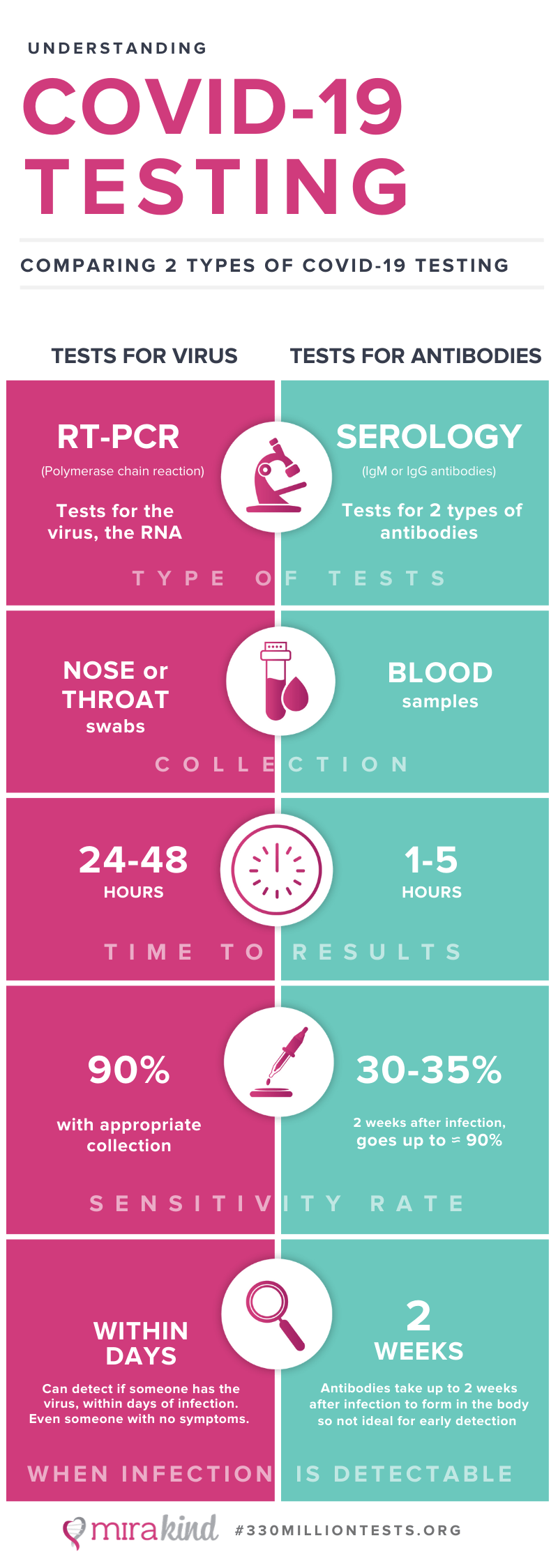For COVID-19 testing, there are two predominant tests on the market: viral tests and serum antibody tests.
Let’s take a look at the main differences between these two types of tests, like what they look for, when each is the most effective, and the logistics of providing each type.
1. Viral Tests
Viral, or PCR, tests determine if an individual currently has COVID-19 by testing for the virus itself through a swab of the nose or throat. These tests indicate whether the person is contagious to others, even if they are asymptomatic. Viral tests are complex and can require at least 24 hours to perform and report. The PCR test is considered the gold standard given its 90%+ accuracy rate and ability to detect even low levels of virus.
Pros of Viral Tests:
- Able to tell if someone is infected before antibodies form or symptom appears, so ideal for early detection and asymptomatic detection
- Gives the ability to gather specific data like how dangerous the virus is for different demographics
- Can follow infected people to see when they are no longer contagious
Cons of Viral Tests:
- Requires expert lab personnel
- More expensive to process
- Once a person has recovered, the virus is eliminated and these tests can no longer tell if you have been infected in the past
2. Antibody tests
Antibody tests determine whether an individual has been infected with the virus and has developed an immune response (antibodies) against the virus. Antibody tests use a blood sample and can be processed relatively quickly, yet they will not identify people with an early infection, nor can they tell whether an individual is no longer shedding the virus and therefore contagious.
Pros of Antibody Tests:
- Quick results
- Cheap to process
- No special training needed to process
- Can tell you if the person had the virus
Cons of Antibody Tests:
- A person may be infected for 2 weeks before testing positive for antibodies
- Even if a person tests positive for antibodies, that person may still be infected with the virus and contagious
In conclusion, the two major types of testing for COVID-19 are vastly different and should be used with a full understanding of how they work and their limitations.
As we are getting ready to flatten the curve and get “back to normal”, companies can use a COVID-19 testing strategy to determine who is safe to return to work.
Here’s an infographic from our sister nonprofit, MiraKind, comparing the difference in testing:

